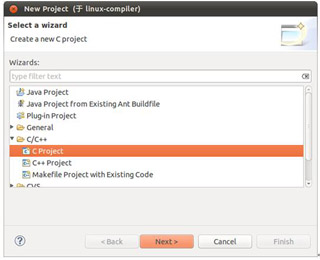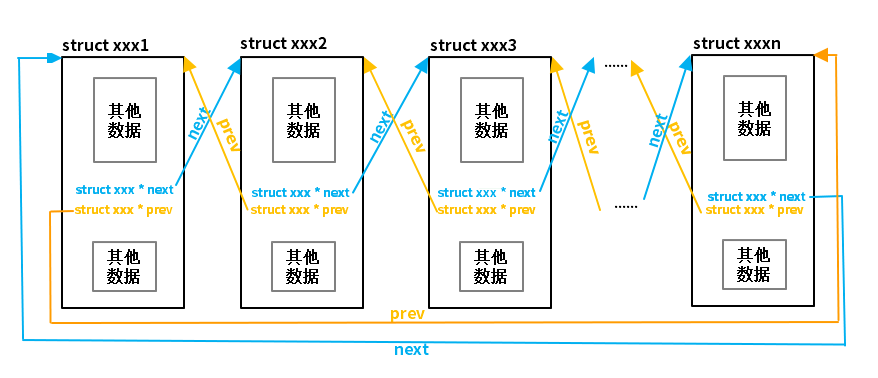说明
通常情况下,Linux内核的结构被认为包含以下11个主要层次:
硬件抽象层 :
提供了与硬件交互的接口,包括设备驱动程序和中断控制器等。 HAL层的主要功能是隐藏硬件细节,为其他层提供一个硬件无关的接口,使内核能够在不同的硬件平台上运行。
系统调用接口层 :
提供了与用户空间程序交互的接口,包括系统调用和进程管理等。 SCI层是内核与用户空间之间的接口,它允许用户空间程序向内核发出请求,以获取系统资源或执行某些操作。
进程管理层 :
管理进程和线程,包括调度、同步和通信等。 PM层负责调度进程和线程的执行,控制进程之间的同步和通信,以及提供进程间共享资源的机制。
进程调度层负责管理系统中的进程,包括进程的创建、销毁、调度等操作。 它是内核的一个核心模块,也是系统性能的关键因素之一。
进程调度层的代码位于 kernel/sched/ 目录下,主要文件包括 sched.c、task.c 和 cgroup_sched.c 等。
内存管理层
管理系统的物理内存和虚拟内存,包括内存分配和释放等。 MM层的主要任务是为进程提供内存,同时保护进程的内存空间不被其他进程破坏。
它是内核的一个核心模块,也是系统性能的关键因素之一。
内存管理层的代码位于 mm/ 目录下,主要文件包括 mmap.c、page_alloc.c 和 vmalloc.c 等。
文件系统层
提供了对文件系统的支持,包括EXT4、FAT32等文件系统的实现。 FS层的主要功能是管理文件和目录,提供对文件的读写访问,并控制文件的权限和安全性。
文件系统层的代码位于 fs/ 目录下,主要文件包括 file.c、namei.c 和 super.c 等。
网络层
实现网络协议栈,包括TCP/IP、UDP等协议的实现。 NET层提供了网络通信的功能,包括数据包的发送和接收、网络连接的管理以及网络安全等。
网络协议栈层的代码位于 net/ 目录下,主要文件包括 core.c、ipv4/ 和 ipv6/ 等。
设备驱动层
提供与硬件设备交互的接口,包括输入/输出设备驱动程序、网络设备驱动程序等。 DD层负责将内核与硬件设备连接起来,允许内核对硬件设备进行访问和控制。
设备驱动层的代码位于 drivers/ 目录下,根据设备类型的不同,代码被组织到不同的子目录中,例如网络设备的驱动代码位于 drivers/net/ 目录下。
中断处理层
处理硬件中断,包括中断的注册、响应和处理等。 IH层负责管理中断处理程序,确保系统能够快速、准确地响应硬件中断。
虚拟化层
实现虚拟化技术,包括KVM、Xen等虚拟化平台的实现。 VIRT层提供了虚拟化的能力,允许在同一物理主机上运行多个虚拟机,并提供虚拟机管理和资源调度的功能。
虚拟化层的代码位于 virt/ 目录下,主要文件包括 virtio.c、kvm/ 和 xen/ 等
安全子系统层
提供了安全机制和策略的实现,包括SELinux、AppArmor等安全子系统的实现。 SEC层为内核提供了安全的保护机制,确保系统资源的安全性和机密性。
安全模块层的代码位于 security/ 目录下,主要文件包括 security.c、capability.c 和 selinux/ 等。
调试和诊断层
提供了内核调试和诊断工具的支持,包括kdump、crash等工具的实现。 D&D层为开发人员提供了内核调试和诊断的功能,以便快速识别和修复内核问题。
其实分层不一定是这样的,因为Linux内核之间是相互交错的,所以分层不一定,从网上也可以看到有的是分了4层,有的七层不等。 当然也可以按照模块来分,其实都差不多,可能是我刚接触有些还不太明白。
硬件抽象层
1// include/linux/platform_device.h
2
3#ifndef _LINUX_PLATFORM_DEVICE_H
4#define _LINUX_PLATFORM_DEVICE_H
5
6struct resource;
7struct platform_device_id;
8struct device;
9
10/**
11 * struct platform_device - platform-level device structure
12 * @name: name of device (mandatory)
13 * @id: id of the device, usually derived from ACPI or device tree
14 * @dev: associated device structure (optional)
15 * @num_resources: number of resources associated with the device
16 * @resource: resource configuration of the device
17 * @dev.parent: parent device (optional)
18 * @driver_override: driver override name (optional)
19 * @dma_mask: dma mask (optional)
20 * @coherent_dma_mask: coherent dma mask (optional)
21 * @id_entry: identity of the device (optional)
22 * @driver_data: driver specific data
23 * @fwnode: firmware node pointer for the device node
24 * @pm_domain: power management domain of the device
25 * @extcon_dev: external connector device associated with platform device
26 *
27 * NOTE: @id_entry is for the use of platform bus only; other bus types should
28 * use their own means to associate a driver with a device.
29 */
30struct platform_device {
31 const char *name;
32 int id;
33 struct device dev;
34 u32 num_resources;
35 struct resource *resource;
36 struct device_node *of_node;
37 struct device *parent;
38 const char *driver_override;
39 const u64 *dma_mask;
40 const u64 *coherent_dma_mask;
41 const struct platform_device_id *id_entry;
42 void *driver_data;
43 struct fwnode_handle *fwnode;
44 struct pm_domain *pm_domain;
45#ifdef CONFIG_EXTCON
46 struct extcon_dev *extcon_dev;
47#endif
48};
49
50/**
51 * platform_device_register() - register a platform-level device
52 * @pdev: platform-level device structure to register
53 *
54 * This function registers a platform-level device with the kernel. The device
55 * will be bound to an appropriate driver if one is available.
56 *
57 * Return: 0 on success, error code on failure.
58 */
59int platform_device_register(struct platform_device *pdev);
60
61/**
62 * platform_device_unregister() - unregister a platform-level device
63 * @pdev: platform-level device structure to unregister
64 *
65 * This function unregisters a platform-level device from the kernel. If the
66 * device was bound to a driver, the driver will be unbound from the device.
67 */
68void platform_device_unregister(struct platform_device *pdev);
69
70#endif /* _LINUX_PLATFORM_DEVICE_H */
设备驱动层
1// include/linux/device.h
2
3/**
4 * struct device_driver - The basic device driver structure
5 * @name: Name of the device driver
6 * @bus: Type of bus device is on
7 * @owner: Module owner
8 * @mod_name: Used for built-in modules
9 * @probe: Initializes a given device
10 * @remove: Reverses the effect of probe
11 * @shutdown: Tear down a device prior to system shutdown
12 * @suspend: Prepares a device for power saving mode
13 * @resume: Wake up a device from power saving mode
14 * @groups: Optional sysfs attribute groups
15 * @of_match_table: Matching table for OF devices
16 * @acpi_match_table: Matching table for ACPI devices
17 * @pm: Device power management operations
18 * @probe_type: Type of probe to be used
19 * @suppress_bind_attrs: Suppress the binding/unbinding attributes
20 * @driverfs_dev: Optional driverfs device link
21 * @percpu_ref: Optional percpu reference count
22 * @p: private driver data (of the driver core)
23 * @fwnode: firmware node pointer for the device node
24 * @legacy: if true, a driver bound by OF style match will match legacy platform devices
25 * @no_driver_policy: policy for devices with missing driver
26 * @bus_rescan_devices: pointer to bus specific rescan devices function
27 * @dev_groups: Optional device specific sysfs attribute groups
28 * @sriov_configure: Optional callback for SR-IOV PF driver to configure VFs
29 * @coherent_dma_masks: Optional list of DMA masks this driver supports.
30 * The list should be terminated with a mask of 0.
31 * If the driver sets a dma_mask, it should be
32 * included in this list.
33 */
34struct device_driver {
35 const char *name;
36 struct bus_type *bus;
37 struct module *owner;
38 const char *mod_name; /* used for built-in modules */
39 const struct of_device_id *of_match_table;
40 const struct acpi_device_id *acpi_match_table;
41 int (*probe) (struct device *dev);
42 int (*remove) (struct device *dev);
43 void (*shutdown) (struct device *dev);
44 int (*suspend) (struct device *dev, pm_message_t state);
45 int (*resume) (struct device *dev);
46 const struct attribute_group **groups;
47 const struct dev_pm_ops *pm;
48
49 /* Set of flags used to determine driver state */
50 unsigned int driver_features;
51 enum probe_type probe_type:2;
52 unsigned int suppress_bind_attrs:1;
53 struct driver_private *p;
54
55 /* For driver core */
56 struct device_driver *next;
57 struct driver_attribute *dyn_attrs;
58#ifdef CONFIG_SYSFS
59 struct kobject kobj;
60#endif
61#ifdef CONFIG_DEBUG_DRIVER
62 unsigned long _priv[4];
63#endif
64 struct fwnode_handle *fwnode;
65 unsigned int legacy:1;
66 enum no_driver_policy no_driver_policy:2;
67 void (*bus_rescan_devices)(struct device_driver *drv);
68 const struct attribute_group **dev_groups;
69
70#ifdef CONFIG_PCI_IOV
71 int (*sriov_configure)(struct pci_dev *dev, int num_vfs);
72#endif
73 const u64 *coherent_dma_masks;
74};
75
76/**
77 * driver_register - register a device driver with the system.
78 * @drv: driver structure
79 *
80 * Returns zero on success, or a negative error code.
81 */
82int driver_register(struct device_driver *drv);
83
84/**
85 * driver_unregister - unregister a driver from the driver core.
86 * @drv: driver structure to unregister
87 */
88void driver_unregister(struct device_driver *drv);
-
内核
+关注
关注
3文章
1372浏览量
40277 -
接口
+关注
关注
33文章
8575浏览量
151015 -
Linux
+关注
关注
87文章
11292浏览量
209328 -
文件
+关注
关注
1文章
565浏览量
24727 -
线程
+关注
关注
0文章
504浏览量
19675
发布评论请先 登录
相关推荐
Linux内核开发工具介绍

一文详解Linux内核源码组织结构
Linux内核结构详解
以linux 5.4.31为例来介绍一下linux内核目录结构
Linux 内核数据结构:位图(Bitmap)
你知道Linux内核数据结构中双向链表的作用?
如何使用Linux内核实现USB驱动程序框架

Linux的内核结构详细说明
STM32MP157 Linux系统移植开发篇7:Linux内核目录结构详解





 Linux内核结构介绍
Linux内核结构介绍













评论